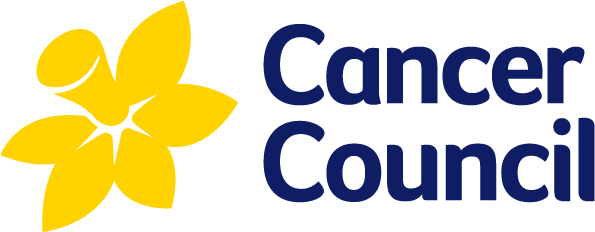Universal Health Coverage and the financial costs of cancer
Financial Cost of Cancer Treatment and Care Policy
Achieving Universal Health Coverage (UHC) in Australia would reduce the impact of the financial costs of cancer. UHC is the practical expression of the right to health, meaning all people have access to health services they need, where and when they need them, without associated financial hardship.1 A well-funded and functioning universal healthcare and social security system and other social protections are necessary for Australia to achieve UHC. This includes the provision of health protection and promotion services, as well as disease prevention, treatment, rehabilitation, and palliative care. UHC has three main goals and a focus on equity of access, especially for marginalised communities, to healthcare (Figure 1).1
Figure 1. The goals of Universal Health Coverage.
Australia has made several commitments to UHC including the International Covenant on Economic, Social and Cultural Rights.2 The Australian Government committed to achieving UHC by 2030 under Target 3.8 of the Sustainable Development Goals, and the 2019 and 2023 United Nations Political Declarations on UHC.3 This will require law and policy reform, including those that established Medicare, the PBS, the National Cancer Screening and National Immunisation Programs, and the private health system.4
Australia has a well-developed universal healthcare and health coverage framework, that broadly meets the goals of UHC (i.e., population coverage, equity of access, quality healthcare services, financial risk protection). However, whether it is maintaining these goals is questionable, given the significant inequities in accessing healthcare, service quality and financial risk protection.5, 6 An erosion of UHC has occurred due to gaps in Medicare coverage; increasing out-of-pocket costs for healthcare services, diagnostics and medicines; fragmentation of cancer prevention and care services; and shortcomings in social support systems, such as social security.7, 8
Definitions
Financial burden
A term used to describe the impact of financial issues a person may experience due to the costs of healthcare.
Financial toxicity
The negative patient-level impact of the costs associated with healthcare. These can include direct out-of-pocket and indirect costs that cause physical and psychological harm, affecting an individual's ability to make decisions and can lead to suboptimal outcomes.1 Financial toxicity combines the objective financial burden and subjective financial distress experienced as a result of a cancer diagnosis.2
People affected by cancer
People with cancer and the people with whom they have a relationship that are impacted, such as family, carers, friends, work colleagues and the broader community. With that in mind, the term, ‘people affected by cancer’ usually refers to a person with cancer and their immediate family, carers and friends.
1. Varlow M, Bass M, Chan RJ, Goldsbury D, Gordon L, Hobbs K, et al. Financial Toxicity in Cancer Care Clinical Oncology Society of Australia; 2022.
2. Zafar SY, Abernethy AP. Financial toxicity, Part I: a new name for a growing problem. Oncology (Williston Park). 2013;27(2):80-149.
References
- World Health Organization. Universal Health Coverage: WHO, ; 2022 [Available from: https://www.who.int/news-room/fact-sheets/detail/universal-health-coverage-(uhc)]
- Attorney-General's Department. Right to Health Canberra (AU): Australian Government 2023 [Available from: https://www.ag.gov.au/rights-and-protections/human-rights-and-anti-discrimination/human-rights-scrutiny/public-sector-guidance-sheets/right-health]
- Political Declaration of the United Nations High-level Meeting on Universal Health Coverage, “Universal health coverage: moving together to build a healthier world” (2019). Available at: https://daccess-ods.un.org/access.nsf/Get?OpenAgent&DS=A/RES/74/2&Lang=E; Political Declaration of the United Nations High-level meeting on Universal Health Coverage, “Universal health coverage: expanding our ambition for health and well-being in a post-COVID world” (2023). Available at: https://daccess-ods.un.org/access.nsf/Get?OpenAgent&DS=A/RES/78/4&Lang=E.
- Department of Health and Aged Care. The Australian health system Canberra (AU): Australian Government; 2023 [Available from: https://www.health.gov.au/about-us/the-australian-health-system]
- Feletto E, Grogan P, Vassallo A, Canfell K. Cancer costs and gender: a snapshot of issues, trends, and opportunities to reduce inequities using Australia as an example. Climacteric. 2019;22(6):538-43.
- Fitch MI, Sharp L, Hanly P, Longo CJ. Experiencing financial toxicity associated with cancer in publicly funded healthcare systems: a systematic review of qualitative studies. Journal of Cancer Survivorship. 2022;16(2):314-28.
- Banatvala N, Banatvala N, Bovet P. Noncommunicable Diseases A Compendium: Taylor & Francis; 2023.
- Union for International Cancer Control, Cancer Council Australia. Addressing cancer control within Universal Health Coverage. Geneva (CH); n.d. https://www.uicc.org/sites/default/files/atoms/files/UICC_Report_Universal-Health%20Coverage_FA.pdf
Explore our Treatment and Care Policy.
